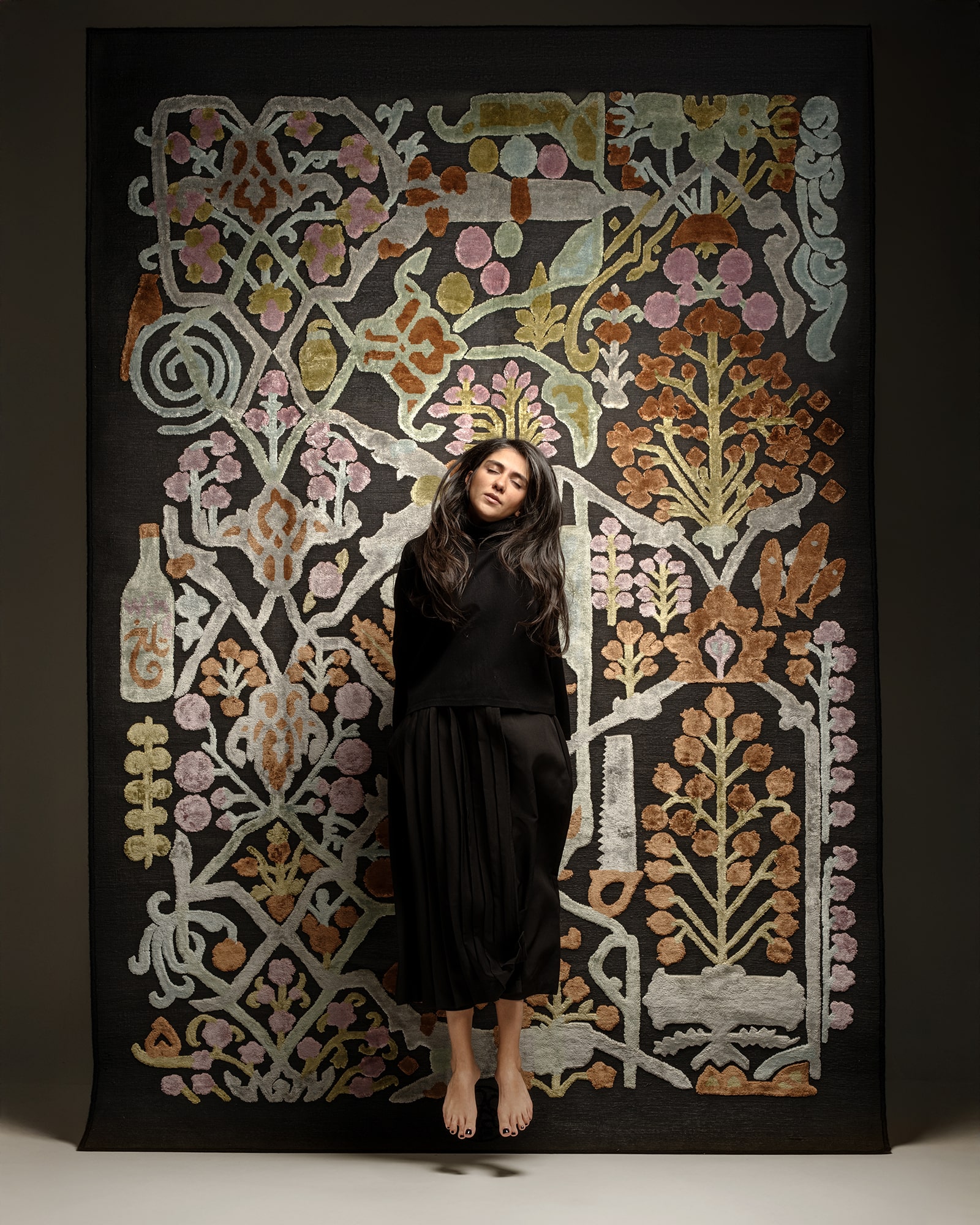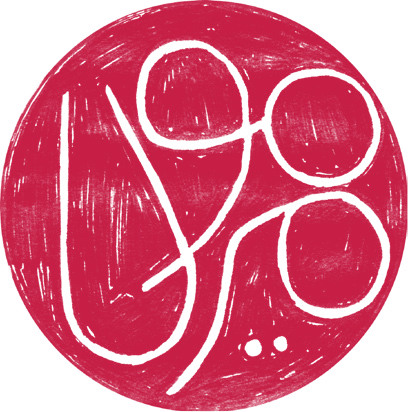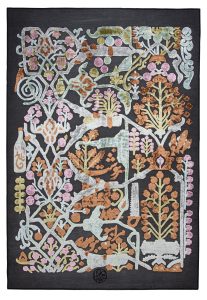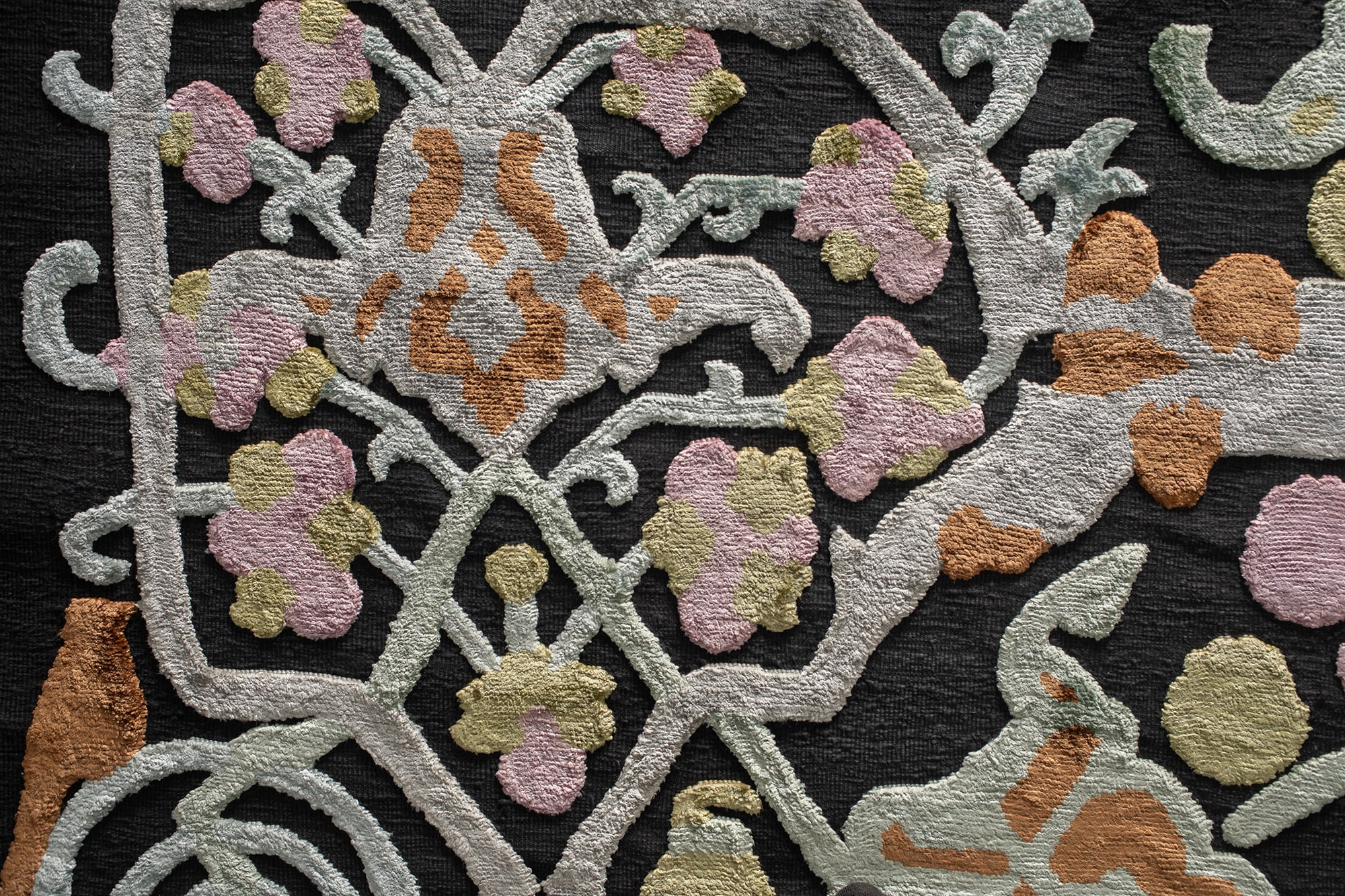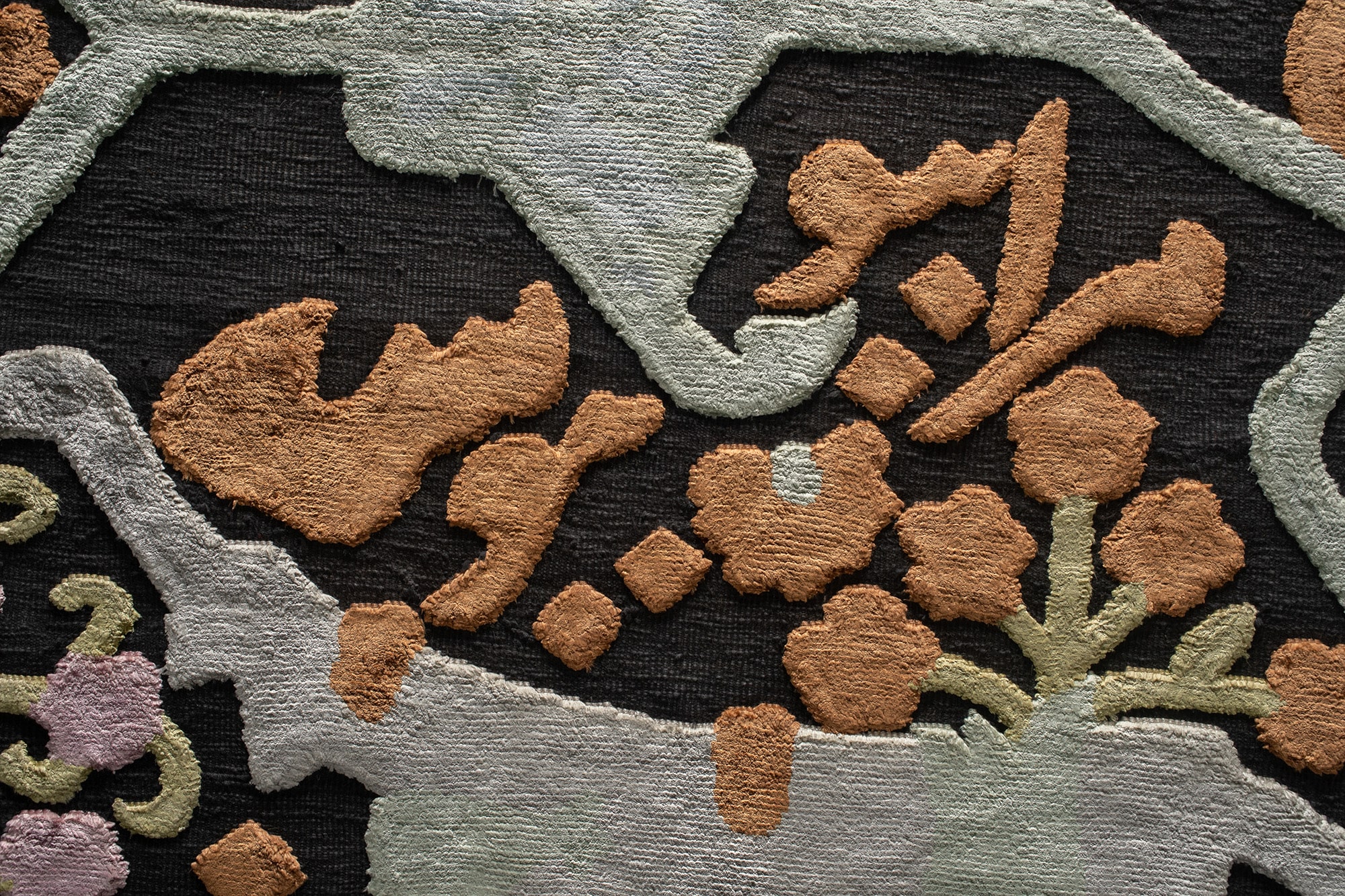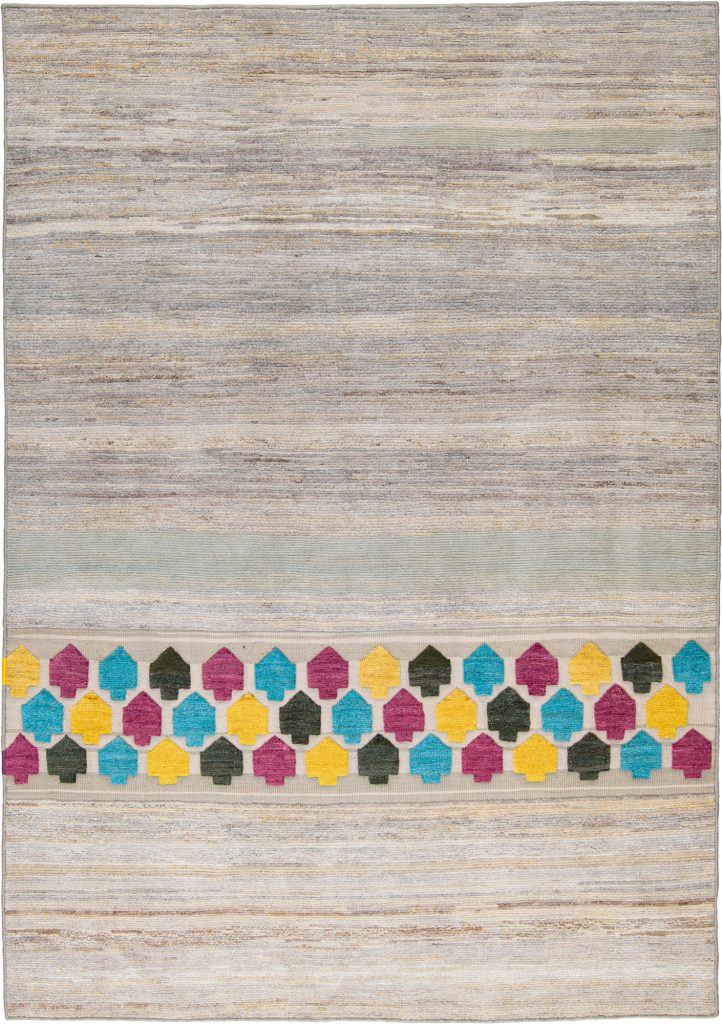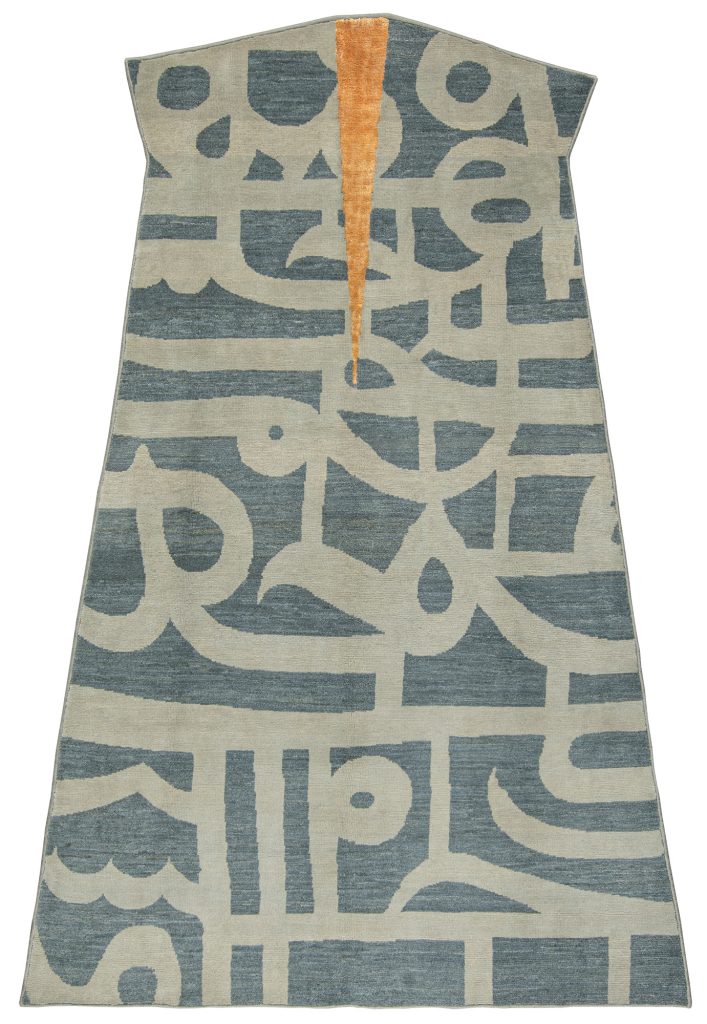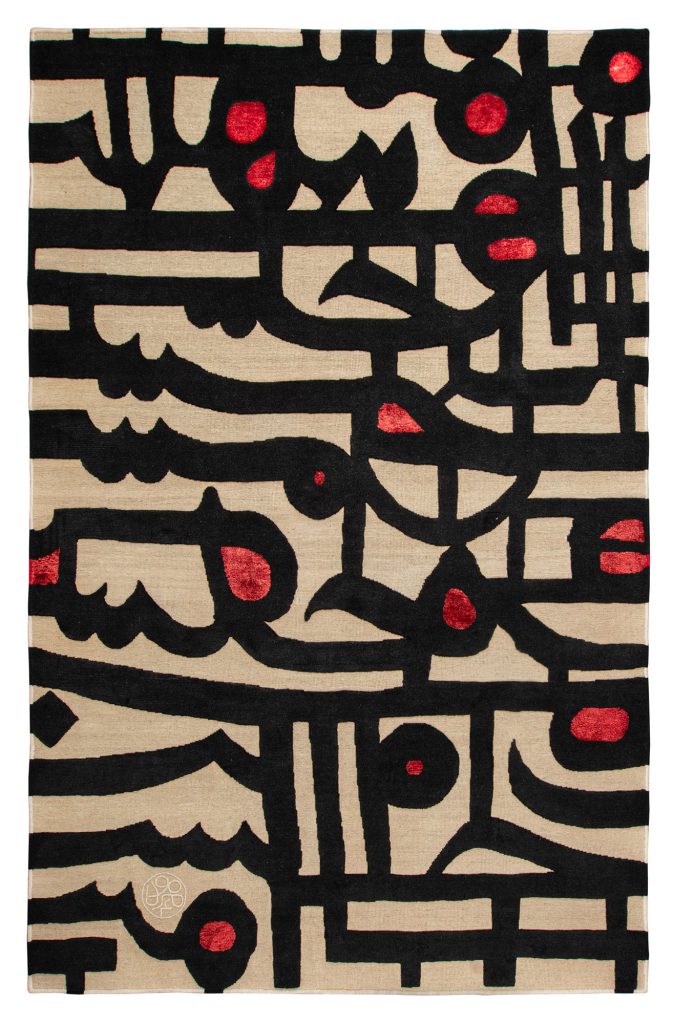Destiny Collection
Silk & kilim
309 x 211 cm
description
Look closely at the forms and symbols in this particular kilim-rug by Mirmola: the pomegranate tree, its branches extending like the pulse of life; the bird, soaring freely; the fish, gliding through the flow of existence. These images evoke vitality, the essence of life itself. But in contrast, we also see the grenade, the raised brush, the grenade again, the bitter wine bottle, and a nostalgic poem—symbols that speak to unrequited love and the politics of the body. These juxtapositions are not accidental; they embody the dualities that shape the human condition.
These motifs, though rooted in the long history of Iranian Islamic art, carry a sense of contemporary urgency. Mirmola’s work takes from this rich cultural tradition, yet it also resists easy interpretation. Elements like the number five and unreadable inscriptions hint at something elusive, encouraging the viewer to engage with what remains hidden. These are not mere decorative flourishes, but deliberate invitations to question, to search, and to reflect.
At the heart of this work, color plays a crucial role. It guides both the artist and the viewer from the chaotic noise of intellectual complexity to a space of relative calm, encouraging introspection. Mirmola’s art calls for simplicity and restraint, offering a respite from the overwhelming noise of the world. His approach to color is not one of excess, but of unity—seeking harmony within the canvas rather than a disjointed explosion of hues.
Restlessness, it seems, is an inseparable part of the artistic process for creators in this age. In a world where meanings are no longer fixed and certainty feels elusive, it’s no surprise that Mirmola’s work engages so profoundly with the complexities of the present. In an era where war, death, and disillusionment seem ever-present, his art offers a meditation on these forces, reflecting the tensions and contradictions of our time.
We must perhaps wait for the day when the forms and meanings woven into his works will no longer remain hidden, but will rise to speak on their own. For in his work, both the artist and the artwork inhabit a space that transcends the ordinary—a space where the miraculous is made tangible, and where the mundane is transformed into something extraordinary.
